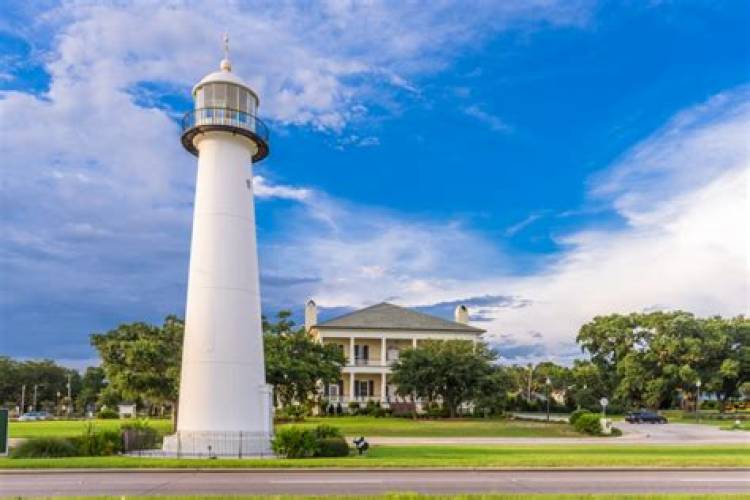Biloxi Lighthouse

The Biloxi Lighthouse was erected in 1848 and was one of the first cast-iron lighthouses in the South. It is the city’s signature landmark and has become a post-Katrina symbol of the city’s resolve and resilience.
The Biloxi Lighthouse was one of three Mississippi Sound lighthouses authorized in 1847 by legislation sponsored by Mississippi Representative Jefferson Davis. A one-acre tract for the lighthouse and keeper’s dwelling was purchased from John Fayard for $600, and metal plates, cast by Murray and Hazlehurst Vulcan Works in Baltimore under a contract for $6,347, were bolted together to form the lighthouse, which was strengthened by a brick lining. The tower was completed in the spring of 1848 under the supervision of Henry Scoles, and Marcellus J. Howard was assigned as the first keeper. Part of Keeper Howard’s job was to service the nine lamps and fourteen-inch reflectors, supplied by Winslow Lewis, that comprised the lighting apparatus. In 1856, a fourth-order Fresnel lens replaced the array of lamps and reflectors.
U.S. 90 at Porter Avenue, south of the new Biloxi Visitors Center, and just west of I-110 loop
